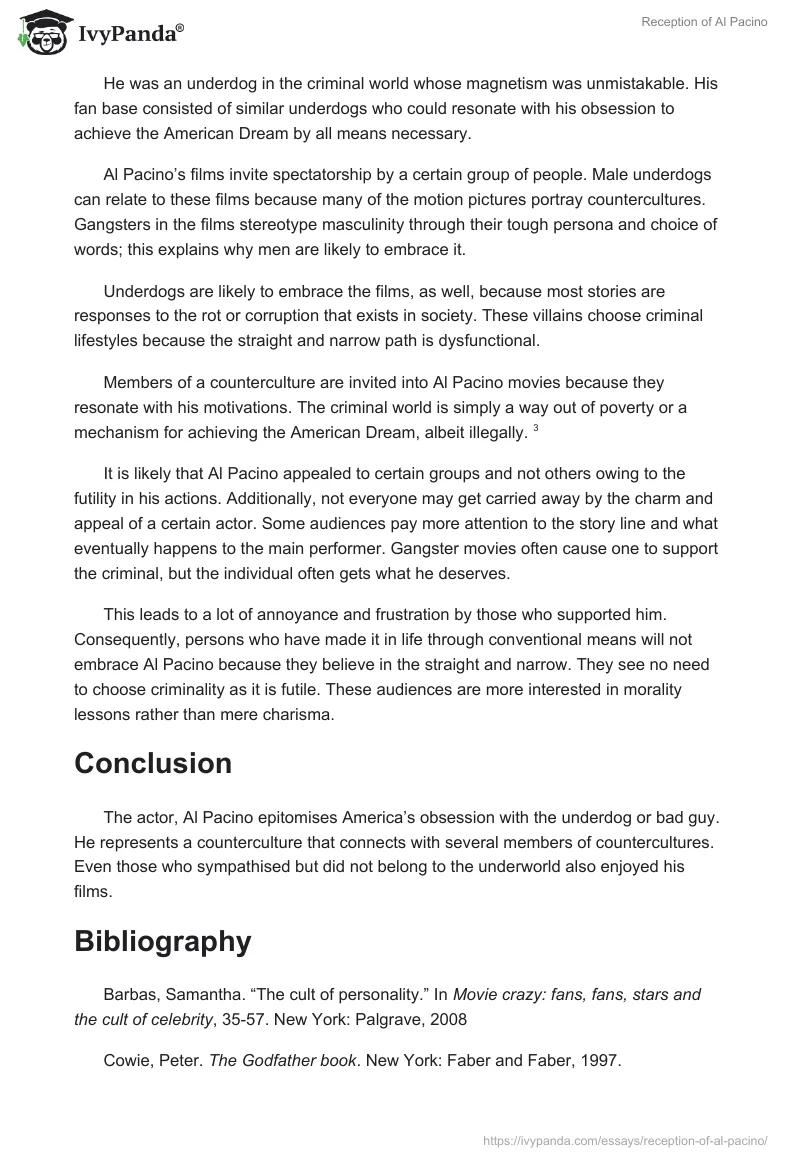Introduction
Al Pacino is widely known for his villainous roles in The Devil’s Advocate, Scarface, The God father and several others. His depiction of these roles resonated with audiences owing to its unconventionality and charisma.
Reception of Al Pacino by fans and reviewers
Reviewers thought that Al Pacino’s depiction of gangsters was quite unusual but refreshing. Not only did the actor portray those roles with great depth, but he also handled the various complexities of their characters flawlessly.
The genre had been marred by depictions of gangsters as distasteful individuals whose interactions with their families largely centred on disagreements with them. However, Al Pacino, in The Godfather, sought to depict another side of the mafia life.
The film supported the notion that these were organisations in which their leaders’ families were royalty. The head would protect his family and work alongside them to get compensation for his work.
The author Barbas Samantha explains why certain fan bases existed for an actor, such as Al Pacino. The proliferation of the mass media as well as modernisation in the early 1900s meant that the relevance of religion had diminished.
Furthermore, crowded cities had no room for the sincerity and morality preached in the nineteenth century. At the time, individuals needed to look for a way of redefining themselves and standing out from the crowd. Therefore, society created the notions of charisma, style and personality.
While this phenomenon of the personality cult was relatively new in the 1930s, it persisted in film depictions until the 1970s. Definitions and portrayals of personality also altered significantly in these four decades. Al Pacino attracted a lot of attention because his type of charm and personality was new in the industry.
He was an underdog in the criminal world whose magnetism was unmistakable. His fan base consisted of similar underdogs who could resonate with his obsession to achieve the American Dream by all means necessary.
Al Pacino’s films invite spectatorship by a certain group of people. Male underdogs can relate to these films because many of the motion pictures portray countercultures. Gangsters in the films stereotype masculinity through their tough persona and choice of words; this explains why men are likely to embrace it.
Underdogs are likely to embrace the films, as well, because most stories are responses to the rot or corruption that exists in society. These villains choose criminal lifestyles because the straight and narrow path is dysfunctional.
Members of a counterculture are invited into Al Pacino movies because they resonate with his motivations. The criminal world is simply a way out of poverty or a mechanism for achieving the American Dream, albeit illegally.
It is likely that Al Pacino appealed to certain groups and not others owing to the futility in his actions. Additionally, not everyone may get carried away by the charm and appeal of a certain actor. Some audiences pay more attention to the story line and what eventually happens to the main performer. Gangster movies often cause one to support the criminal, but the individual often gets what he deserves.
This leads to a lot of annoyance and frustration by those who supported him. Consequently, persons who have made it in life through conventional means will not embrace Al Pacino because they believe in the straight and narrow. They see no need to choose criminality as it is futile. These audiences are more interested in morality lessons rather than mere charisma.
Conclusion
The actor, Al Pacino epitomises America’s obsession with the underdog or bad guy. He represents a counterculture that connects with several members of countercultures. Even those who sympathised but did not belong to the underworld also enjoyed his films.
Bibliography
Barbas, Samantha. “The cult of personality.” In Movie crazy: fans, fans, stars and the cult of celebrity, 35-57. New York: Palgrave, 2008.
Cowie, Peter. The Godfather book. New York: Faber and Faber, 1997.
Snyder, James, “Scarface nation.” Time, 2009.


